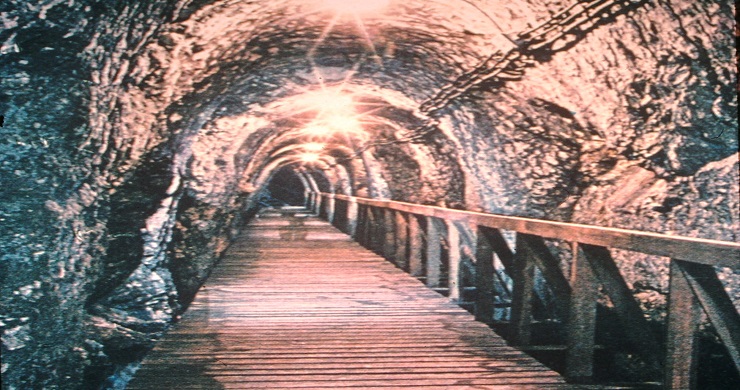Hezekiah’s Reign and Historical Context
King Hezekiah of Judah is a prominent biblical figure. He left a lasting impact on the history of Jerusalem. Hezekiah, the 13th successor of King David, ruled from approximately 715 to 686 BC. Described as a king who “did right in the eyes of the Lord,” Hezekiah initiated a series of reforms against idolatry in Judah and sought to strengthen his kingdom’s defences. Outside of those who read the bible, he is best known for Hezekiah’s Tunnel Sluice Gate.
Assyrian Threat to Jerusalem
During the 8th century BC, the powerful Assyrian Empire was on a relentless expansion campaign in the ancient Near East. In 722 BC, Assyrian forces had already attacked and devastated Samaria, the capital of the northern Kingdom of Israel. This led to the captivity of many Israelites. When Hezekiah ascended to the throne, Judah was already a vassal of Assyria. However, he decided to defy Assyrian dominance and refused to pay the annual tribute. In retaliation, King Sennacherib of Assyria launched an attack on Jerusalem, intent on bringing it under his control.
In preparation for the impending Assyrian siege, Hezekiah took decisive measures to defend Jerusalem. He rebuilt the city’s fortifications, formed a defence treaty with Egypt, and manufactured weapons. He also constructed storehouses to ensure a steady supply of provisions during the siege. The most remarkable engineering feat of this period was the construction of a tunnel to secure the vital water source for Jerusalem.
The Gihon Spring and its Importance
The Gihon Spring was Jerusalem’s primary source of fresh water, situated outside the city walls. Recognizing that Assyrian invaders would likely target this water source, Hezekiah devised a plan to divert the Gihon Spring’s water into the city. The tunnel, known as Hezekiah’s Tunnel or the Siloah Tunnel, was an extraordinary feat of ancient water engineering. Stretching over 1,750 feet, the tunnel was carved from solid rock. It sloped gently at a mere 0.06-degree gradient. This ensured that the water could flow by gravity from the spring to the Siloam Pool inside the city.
An intriguing aspect of Hezekiah’s Tunnel was how it addressed the challenge of maintaining water levels in the upper parts of Jerusalem. Diverting the Gihon Spring’s water into the city would have lowered the water levels in the tunnels leading to the higher areas. To solve this problem, a recent study revealed the existence of an advanced sluice gate system inside the tunnel.
The sluice gate, located approximately 71 meters from the tunnel’s southern exit, was designed to control the water levels in the new aqueduct as well as the Gihon Spring’s surrounding environment. By selectively managing water flow, the gate ensured that the water supply to the city’s religious and political core remained secure during the siege.
Symmetric Iron Bolts and Cedar Wood Slivers
The researchers’ findings were based on substantial evidence. Including the discovery of four symmetrically placed iron bolts hammered into the bedrock walls at the highest point of the tunnel. These bolts, although heavily corroded, were about 3 inches long. They bore traces of petrified cedar wood slivers. Indicating their function in the sluice gate mechanism.
In addition to the iron bolts, three round holes were found in the ceiling above the sluice, surrounded by layers of black mortar. These holes likely held metal devices that guided ropes used to raise and lower the gate. The height difference in this part of the tunnel provided ample space for a tall, vertically-sliding gate.
Carbon dating of the plaster used to seal the tunnel and sediment layers along its walls dated the sluice gate to the period between the 8th and 4th centuries BC. This makes it, to the best of current knowledge, the oldest known sluice gate in history.
Connecting Faith and Archaeology
The discovery of the sluice gate sheds light on the sophisticated engineering capabilities of ancient civilizations. It provides tangible evidence supporting the historical accuracy of biblical accounts. Hezekiah’s tunnel is now a fascinating archaeological site. It allows visitors to traverse its remarkable length, gaining insights into the ingenuity of the past.
Moreover, the discovery of the sluice gate emphasizes the significance of water management and hydraulic engineering in ancient societies. Water sources and their control were of paramount importance for the survival and prosperity of ancient cities. Hezekiah’s tunnel stands as a testament to the resourcefulness of its builders.
As archaeologists continue to explore ancient sites and uncover new artifacts, the link between archaeology and biblical history becomes increasingly evident. The biblical narrative comes to life through the material evidence unearthed by dedicated researchers. Thus reinforcing the historical accuracy and cultural context of the Bible.
The Legacy of Hezekiah’s Tunnel Sluice Gate
Hezekiah’s tunnel and the ingenious sluice gate serve as a reminder. The past still holds many secrets waiting to be revealed. By understanding and appreciating the accomplishments of ancient civilizations, we gain valuable insights into our shared human heritage and the technological advancements that have shaped our world. The discovery of the sluice gate stands as a testament to the enduring legacy of ancient ingenuity and encourages us to keep thinking and exploring the mysteries of our past. You can read more detail here.


 Search The Bible the way you have always wanted to.
Search The Bible the way you have always wanted to.

 The most complete Bible study Platform. Start you Free trial Now!
The most complete Bible study Platform. Start you Free trial Now!


